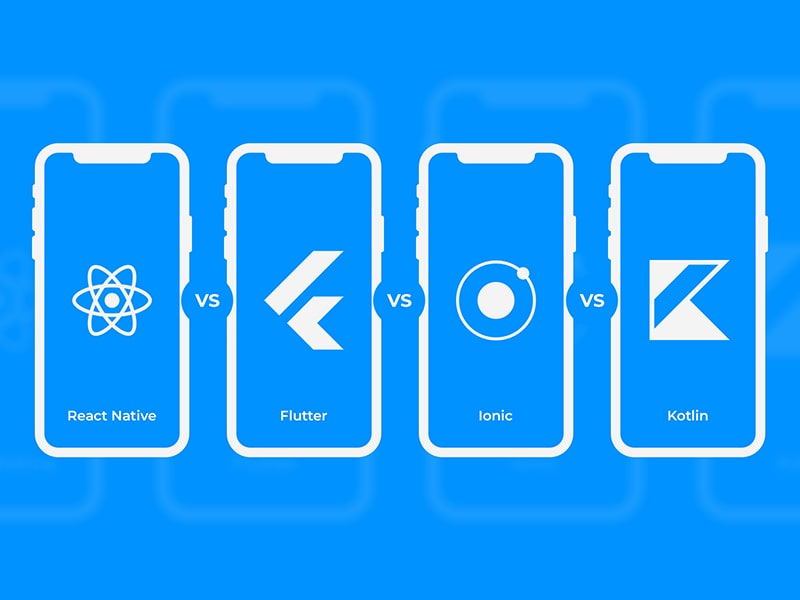Android Development in 2025: Java vs Kotlin vs Flutter vs Others – What Should You Choose?
 Moulitharan C
Moulitharan C
In today’s tech-driven world, smartphones are everywhere, and Android continues to lead the market with a significant share of users across the globe. If you're planning to build an Android app, one of the biggest questions you'll face is: What technology should I use to develop it?
Should you go with the reliable Java, the modern Kotlin, or the cross-platform Flutter? Or should you explore alternatives like React Native or Xamarin? This blog dives deep into each of these options, comparing them in terms of performance, ease of use, community support, and real-world use cases.
🧱 1. Java – The Traditional Powerhouse
Java is the original language of Android development. For many years, it was the official language supported by Google, and almost all the early Android apps were built using Java. It’s a general-purpose, object-oriented language with a massive ecosystem and strong community support.
✅ Advantages of Java:
Mature and stable – well-tested and trusted in production apps.
Huge knowledge base – endless tutorials, forums, and documentation.
Strong Android API compatibility – works seamlessly with Android SDK.
❌ Drawbacks of Java:
Verbose syntax – a lot of boilerplate code for even simple tasks.
Slower development – compared to modern languages like Kotlin or Dart.
UI design limitations – XML-based layouts can feel outdated.
When to use Java:
If you’re working on an existing Android project or maintaining legacy codebases, Java is a safe and effective option. It’s also great for developers with a backend or enterprise Java background who want to transition into Android.
⚡ 2. Kotlin – The Official Modern Language for Android
In 2017, Google officially announced support for Kotlin as a first-class language for Android development, and in 2019, it became the preferred language for Android. Kotlin is developed by JetBrains (the same company behind IntelliJ IDEA and Android Studio).
✅ Why developers love Kotlin:
Concise and expressive – less boilerplate code than Java.
Null safety – reduces crashes caused by null pointer exceptions.
Interoperable with Java – you can use Java and Kotlin together in the same project.
Coroutines support – makes asynchronous tasks much easier to manage.
❌ Limitations of Kotlin:
Slight learning curve – especially for beginners unfamiliar with its concise syntax.
Can slow down compilation – sometimes slower than Java during build time.
When to use Kotlin:
If you're starting a new Android project in 2025, Kotlin should be your top choice. It’s modern, elegant, and fully supported by Google and the Android community.
🎨 3. Flutter – Cross-Platform Power with Beautiful UIs
Flutter is Google’s UI toolkit that allows you to build apps for Android, iOS, web, desktop, and even embedded devices – all using a single codebase written in Dart.
This framework has exploded in popularity thanks to its performance, flexibility, and developer-friendly features like Hot Reload, which lets you instantly see UI changes without restarting your app.
✅ Flutter Highlights:
Cross-platform – write once, run on both Android and iOS.
Rich UI components – easily customizable and pixel-perfect UIs.
Fast development – Hot Reload saves hours of time.
Strong Google backing – continuously evolving and improving.
❌ Things to consider:
App size – Flutter apps tend to be slightly larger in file size.
Dart language – not as widely known as Java or Kotlin, requires learning.
Platform-specific code – you might still need native code for some features.
When to choose Flutter:
If you want to build apps for both Android and iOS quickly, or you're working on a startup/MVP, Flutter is a great choice. Its beautiful UI capabilities make it ideal for consumer-facing apps that need to look and feel polished.
🌐 4. React Native – Web Developers, This One’s for You
React Native is a framework developed by Facebook that allows developers to build mobile apps using JavaScript and React. It's very popular among web developers who want to jump into mobile development without learning a completely new language or framework.
✅ Why React Native is popular:
Code reusability – one codebase for Android, iOS, and even the web.
Huge community – lots of libraries, tools, and support available.
Quick to learn – especially for developers with JavaScript and React experience.
❌ Downsides:
Performance not always native-like – especially for animations or complex tasks.
Requires bridging – to access native modules like GPS, camera, etc.
UI differences – maintaining a consistent look across platforms can be tricky.
When to use React Native:
React Native is ideal for web developers looking to build mobile apps or teams that want to rapidly build and launch cross-platform applications with a single team of developers.
🧰 Other Tools You Might Explore
Xamarin: Based on C# and .NET, good for developers already in the Microsoft ecosystem.
NativeScript: Allows writing native apps using Angular, TypeScript, or JavaScript.
PhoneGap (deprecated): Once popular, now largely outdated and no longer maintained.
These are less mainstream but can be helpful in specific environments or if your team already has relevant expertise.

📊 Quick Comparison Table
| Feature | Java | Kotlin | Flutter (Dart) | React Native |
| Language | Java | Kotlin | Dart | JavaScript |
| UI Framework | XML | XML | Custom Widgets | Native Widgets |
| Cross-Platform | ❌ | ❌ | ✅ | ✅ |
| Performance | ✅ | ✅ | ✅ | ⚠️ |
| Community | ✅✅ | ✅✅ | ✅✅✅ | ✅✅✅ |
🔚 Conclusion
In 2025, Kotlin and Flutter are leading the way for Android app development. Kotlin is the future of native Android development, offering powerful, modern features while keeping compatibility with Java. Flutter is perfect for those who want to build stunning cross-platform apps with high performance and a rich UI.
Subscribe to my newsletter
Read articles from Moulitharan C directly inside your inbox. Subscribe to the newsletter, and don't miss out.
Written by
